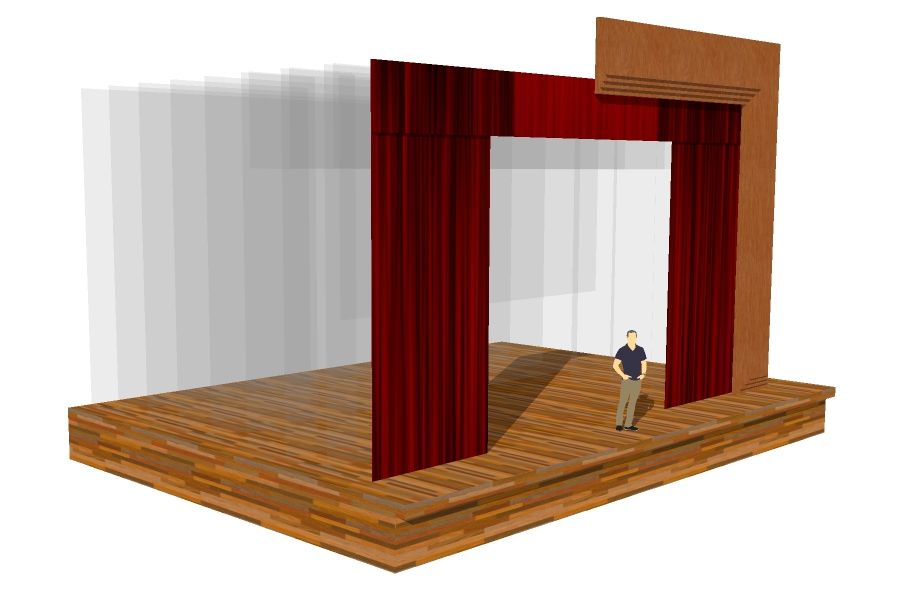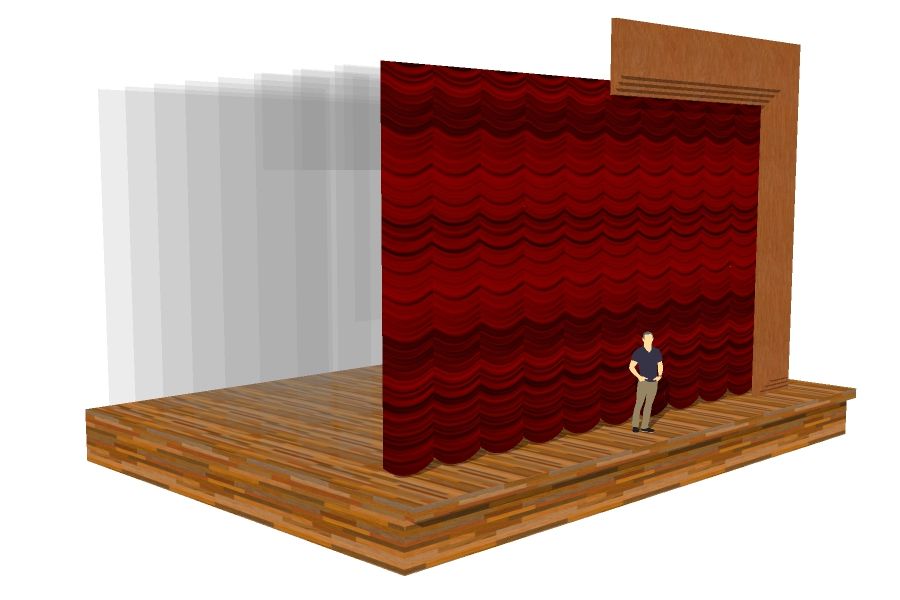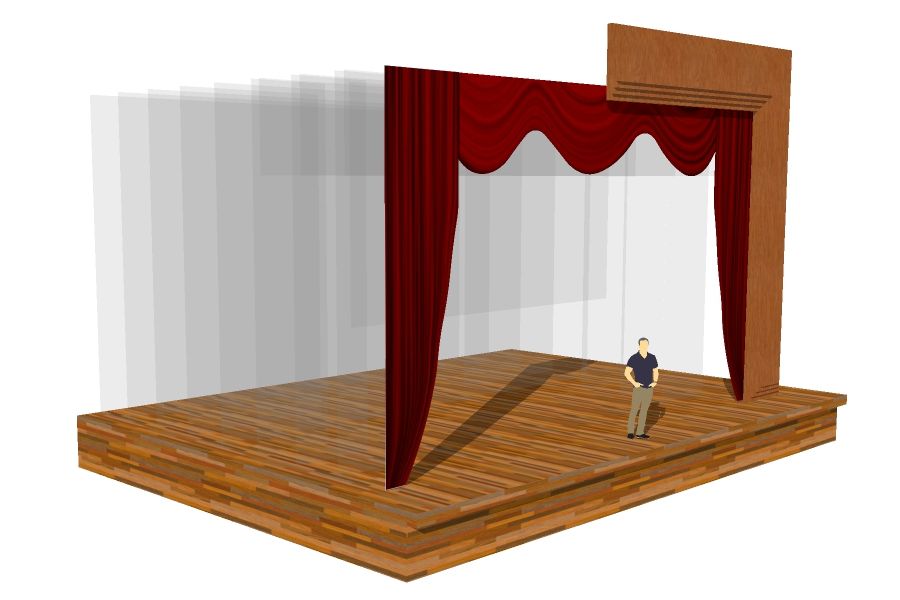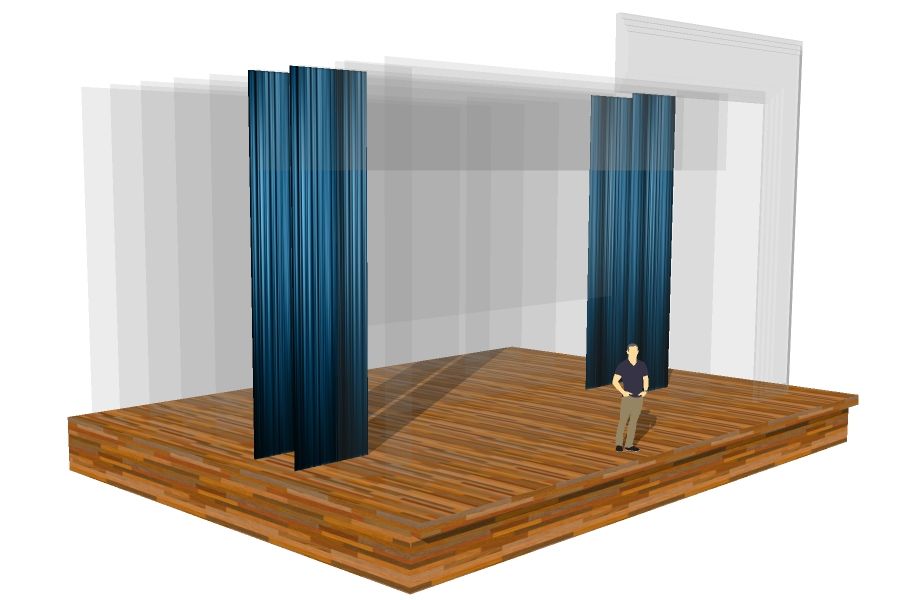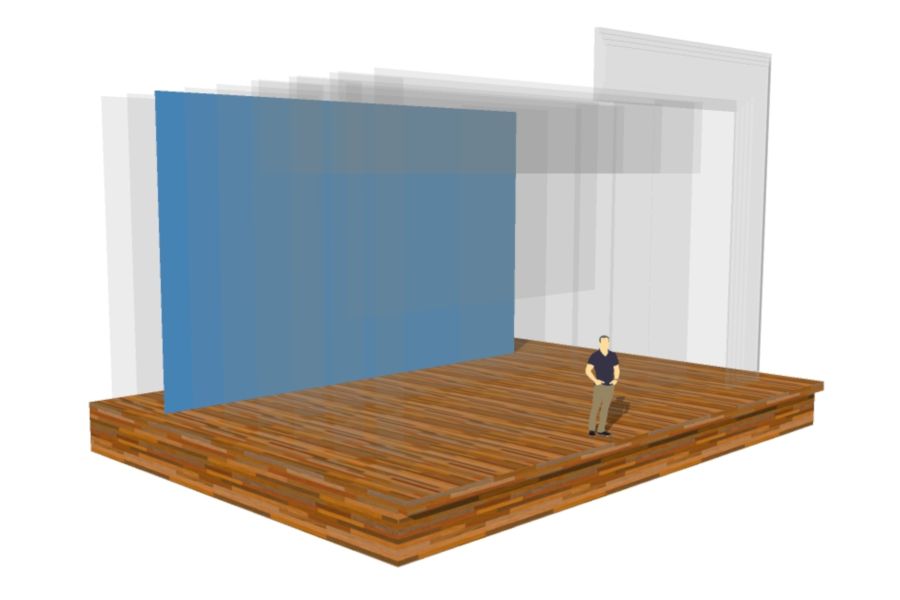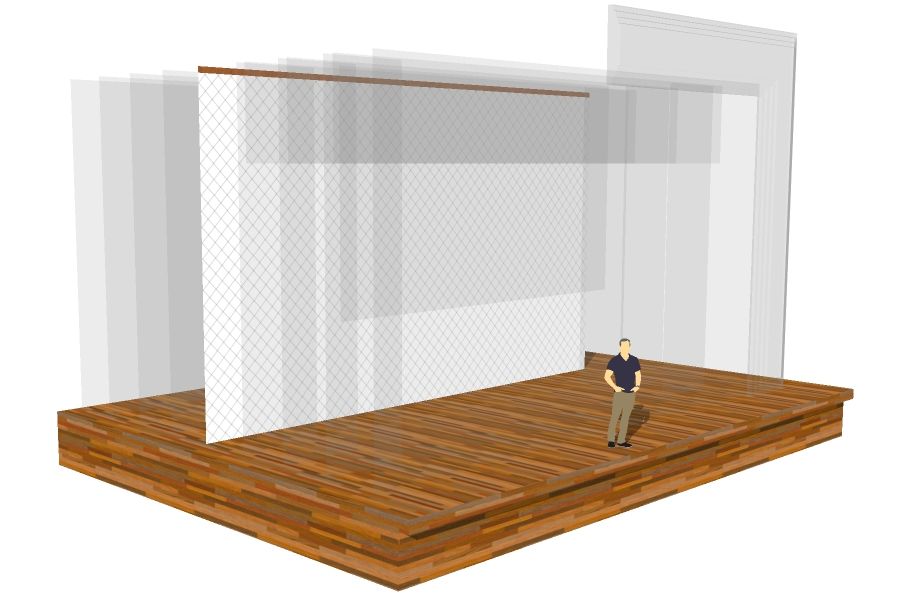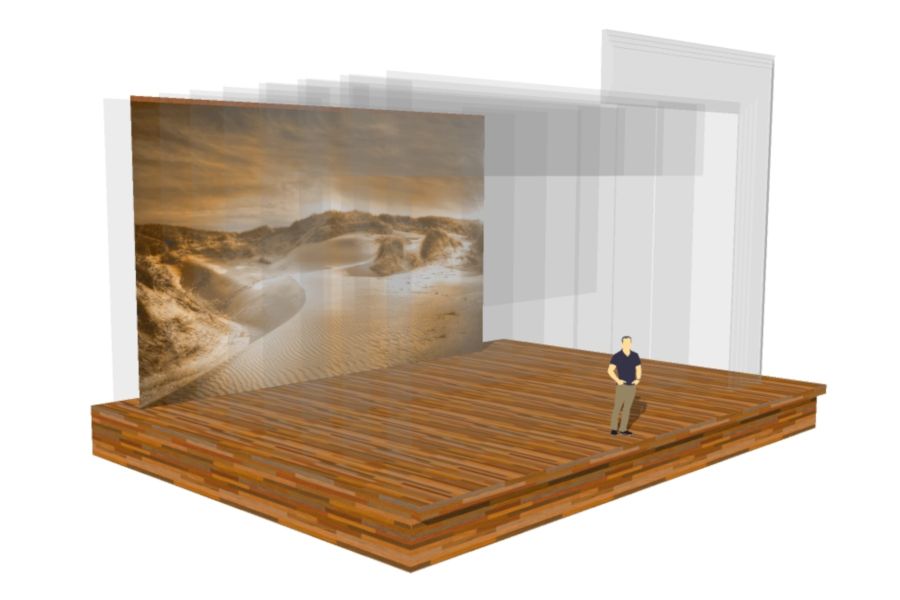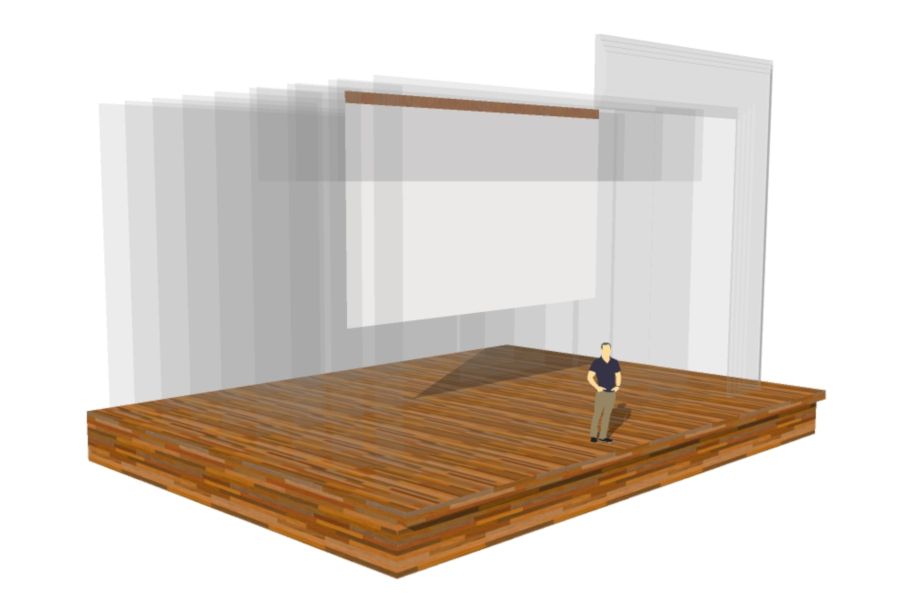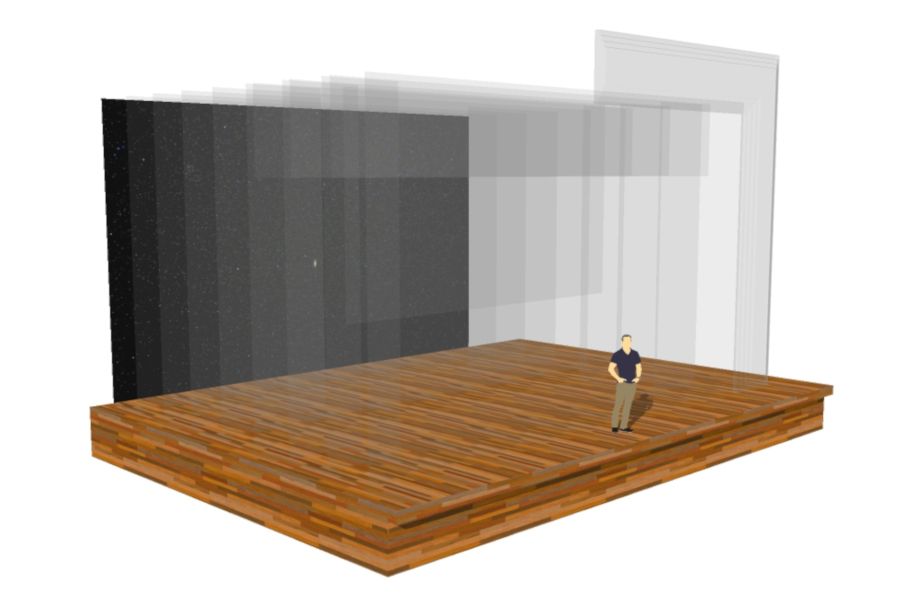Stage Curtains
Below you will find a description of possible different curtains layers that can be used as a guideline for your specific project.
Masking Curtains
Used to cover, divide, hide or conceal backstage areas.
Masking curtains are typically behind the proscenium curtains (up-stage) and as the name implies, their purpose is to “mask” or hide stage equipment, stage lighting and off-stage areas. These curtains also help absorb and block light and when manufactured out of a rich napped fabric, they improve the acoustical properties of the space and help control sound reverberation.
At the same time side masking panels or mid-stage traveler curtains help adjust the size of the stage and are frequently used to create lateral entry ways to the stage.
The most common masking curtains are listed below.
Teasers and Tormentors
Within certain limits, the size of any proscenium arch can be altered by using a Teaser and Tormentors. These two theatrical masking pieces work in conjunction to adjust the size of the opening to be revealed and are either located upstage of the structural proscenium opening or upstage (right behind) the Grand drape. The teaser is a horizontal masking border attached to a pipe batten and rigged so that it can be raised or lowered as needed to adjust the stage height as required by the current scene. At the same time, Tormentors act as vertical masking or “side masking” pieces that when combined with a Teaser, can be used to adjust the height and width of the opening to fit the current scene.
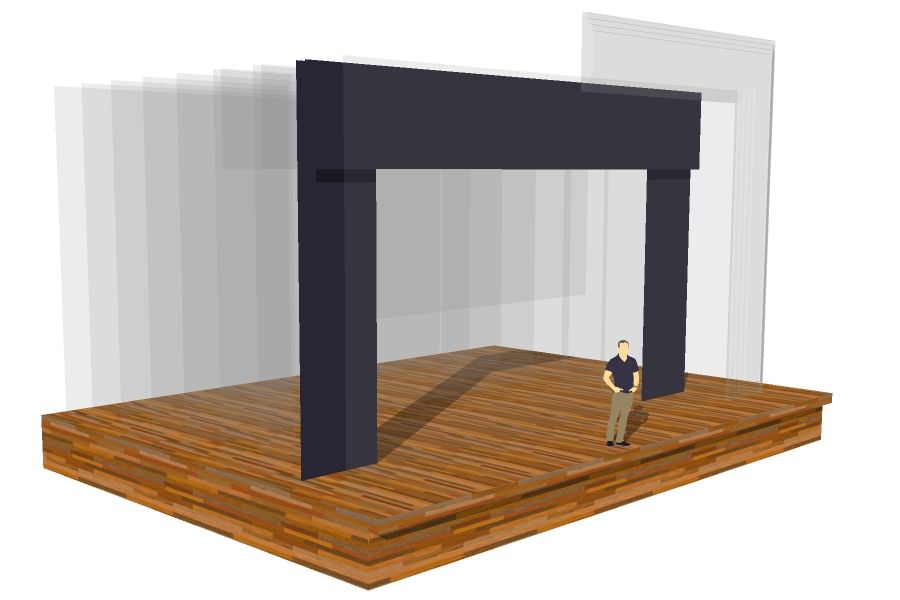 Both Teaser and Tormentors can be manufactured out of the same fabric as the Grand drape and Valance, or otherwise they are fabricated out of black masking fabric. Typical and recommended fabric choices for a tormentor and teaser include flame retardant Black Cotton Velour FR, Black Inherently Fire Retardant Encore Velour or Black Commando Cloth as a more economical choice.
Both Teaser and Tormentors can be manufactured out of the same fabric as the Grand drape and Valance, or otherwise they are fabricated out of black masking fabric. Typical and recommended fabric choices for a tormentor and teaser include flame retardant Black Cotton Velour FR, Black Inherently Fire Retardant Encore Velour or Black Commando Cloth as a more economical choice.
Occasionally, a tormentor may be made as a solid framed piece masked with a stretched piece of fabric, as an alternative to a standard flat curtain.
Typically, tormentors are tied-up to a pipe batten which travels on a BESTEEL® 170 Series curtain track or a SILENT STEEL® 280 Series curtain track, allowing the tormentors to be drawn on or off stage to adjust to the desired opening size for the current scene. The pipe batten can be also equipped with a swivel Rotodraper® pivot arm allowing the tormentors to rotate into an angle or even make a 180 degree turn to reveal an alternate fabric or finish. Please contact us if you need more information. We are here to assist you!
Borders / Teasers
Also known as teasers, masking borders purpose is to hide light bars, curtain tracks, pipe battens, projection screens, and related equipment above the stage space. The appropriate size and quantities is usually determined by sight lines and stage dimensions. Borders are typically tied up to a pipe batten and are considered stationary curtains; however, when installed on counter weighted or motorized fly sets like pipe battens or trusses they can also be raised or lowered to increase or reduce the stage height as needed for each particular production.
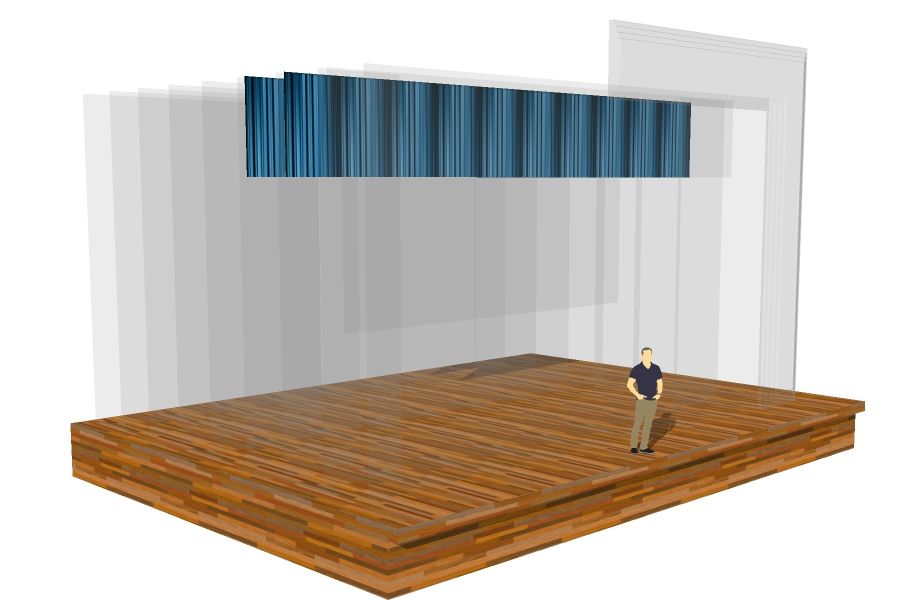 Our recommended fabric choices include - but are not limited Synthetic Eco-Poly Velour 22oz IFR, Encore Velour IFR or Crescent Velour IFR since these fabrics offer good opacity. For school stage projects, vinyl backed Doral Opaque 21oz IFR is also recommended for its opacity, durability and Inherently Flame Resistant properties.
Our recommended fabric choices include - but are not limited Synthetic Eco-Poly Velour 22oz IFR, Encore Velour IFR or Crescent Velour IFR since these fabrics offer good opacity. For school stage projects, vinyl backed Doral Opaque 21oz IFR is also recommended for its opacity, durability and Inherently Flame Resistant properties.
For projects with a restricted budget, an economical alternative that offers fair opacity is our Commando 16oz FR. If looking for a more economical velour material, also consider using our Synthetic Eco-Poly Velour 15oz IFR. You can also visit the fabrics section of our website for more drapery material choices and fabric specifications.
NOTE: Since Borders will many times be at close proximity to stage lights; while not necessary, it is recommended that they be lined to slow the process of the fabric becoming brittle, and adding opacity to the curtain. Some of the lining fabrics we recommend are Ranger 9oz FR and Poplin 10oz IFR.
Additionally, we recommend a Heat Resistant Border fabricated from our 60" Heat Stop IFR material is hung behind all masking borders installed in close proximity to stage lighting.
Please contact us if you have questions, and one of our friendly sales representatives will be more than happy to assist you!
Legs / Wings
Also known as wings, flippers or side curtains, legs hide off-stage areas and create access points between sets for performers. Their size and location is usually determined by the stage sight lines as these curtains work as stage side masking curtains and are designed to cover gaps. Since the legs will be exposed to “heavy on-stage traffic”; while not necessary, often times it is recommended for the legs to be lined to protect the face fabric, adding years of life to the curtain and also helping with opacity.

Our recommended fabric choices include - but are not limited to Synthetic Eco-Poly Velour 22oz IFR, Encore 22oz IFR or Crescent Velour 20oz IFR as these materials provide good opacity. For school projects, vinyl backed Doral Opaque 21oz IFR is also recommended for its opacity, durability and Inherently Flame Resistant properties.
For projects with a restricted budget, an economical alternative that offers fair opacity is Commando 16oz FR. If looking for a more economical yet durable velour material, also consider using our Synthetic Eco-Poly Velour 15oz IFR. When adding lining to your curtains we recommend Ranger 12oz FR for cotton Velour curtains and Poplin IFR lining for synthetic Velour curtains. More options available in the fabric section of our website.
When used as stationary curtains, legs can be tied-up to a pipe batten. However, oftentimes there is a need to move these curtains on and off-stage. In those cases, legs can be hanged from a BESTEEL® 170 Series curtain track or a SILENT STEEL® 280 Series curtain track or can be combined with a Rotodraper® pivot arm assembly. This alternate setup increases functionality and versatility as the curtains can be traveled or rotated to provide a different stage ambiance and or to adjust the stage width.
Please contact us if you have questions, we will be happy to assist you!
Midstage and Rear Travelers
These curtains are often used to section off the stage to turn it into a smaller acting area or to hide equipment and mask areas upstage of the proscenium curtains, creating an entry point to the stage in between curtain sets. Mid Stage Travelers and Rear Travelers are usually made with fullness (pleated) and usually consist of two panels that traverse from the center to the sides of the stage. Since these curtains are usually exposed to “heavy on-stage traffic”, sometimes a drapery lining is added to protect the face fabric.
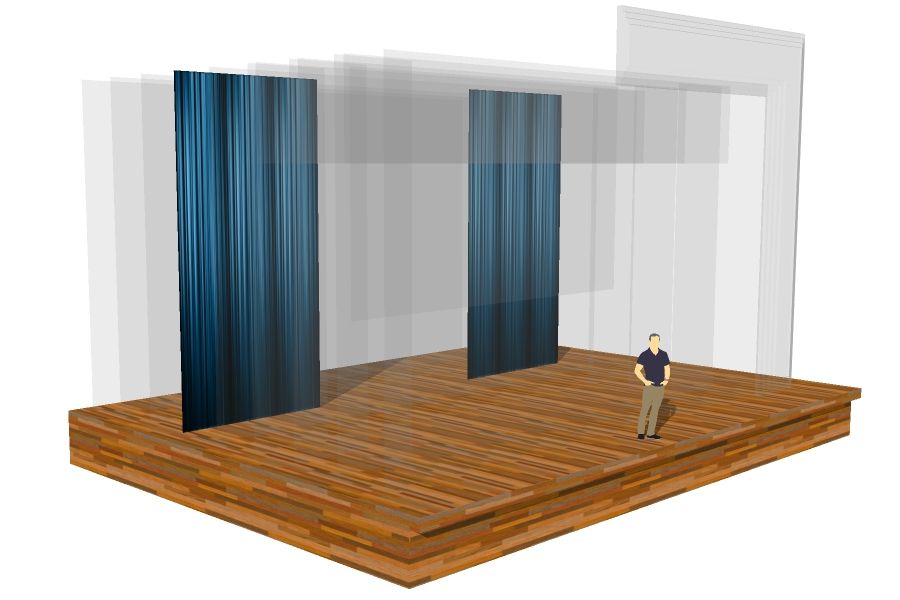 Our recommended fabric choices for a mid-stage traveler or a rear traveler include - but are not limited to Synthetic Eco-Poly Velour 22oz IFR, Encore Velour 22oz IFR or Crescent Velour 20oz IFR. For school projects, vinyl backed Doral Opaque 21oz IFR is also recommended for its opacity, durability and Inherently Flame Resistant properties.
Our recommended fabric choices for a mid-stage traveler or a rear traveler include - but are not limited to Synthetic Eco-Poly Velour 22oz IFR, Encore Velour 22oz IFR or Crescent Velour 20oz IFR. For school projects, vinyl backed Doral Opaque 21oz IFR is also recommended for its opacity, durability and Inherently Flame Resistant properties.
When on a restricted budget, an economical alternative that offers fair opacity is our Commando 16oz FR. If looking for an economical yet durable velour material, a good light weight fabric alternative is our Synthetic Eco-Poly Velour 15oz IFR. If you choose to add a drapery liner, we recommend 12oz Ranger FR for cotton drapes and 10oz Poplin lining IFR for synthetic Velour curtains. You can also visit the fabrics section of our website to choose from our wide selection of flame retardant fabrics.
The recommended curtain track for most standard traveler curtains with a straight layout is our BESTEEL® 170 Series curtain track, and for larger and heavier drapery applications our SILENT STEEL® 280 Series curtain track can be used. For stages with space restrictions or unusual configurations, it is required the traveler curtain is installed on a custom curved track system. For these applications either the RIG-I-FLEX® 140 Series curtain track, the TRIPL-I-TRAC® 420 Series track system or for larger curtians the PATRIARC® 500 Series curtain track can be used to accomodate the desired curved layout. The tracks can be setup for bi-parting or one way draw operation.
NOTE: If you need help selecting the most appropriate curtain track system for your application, you can visit our curtain track selector guide, or contact us and one of our experienced sales representatives will be glad to assist you.
